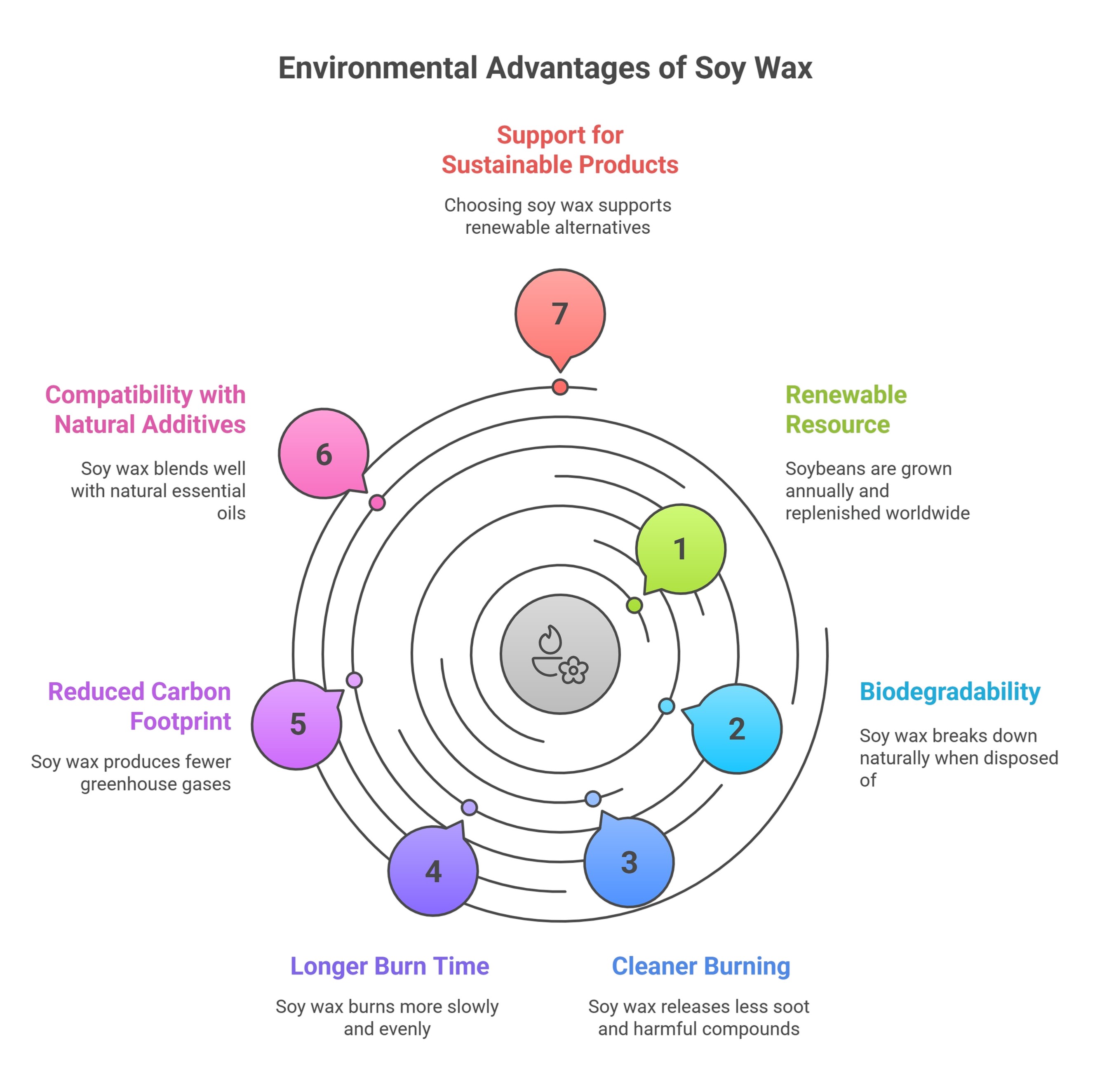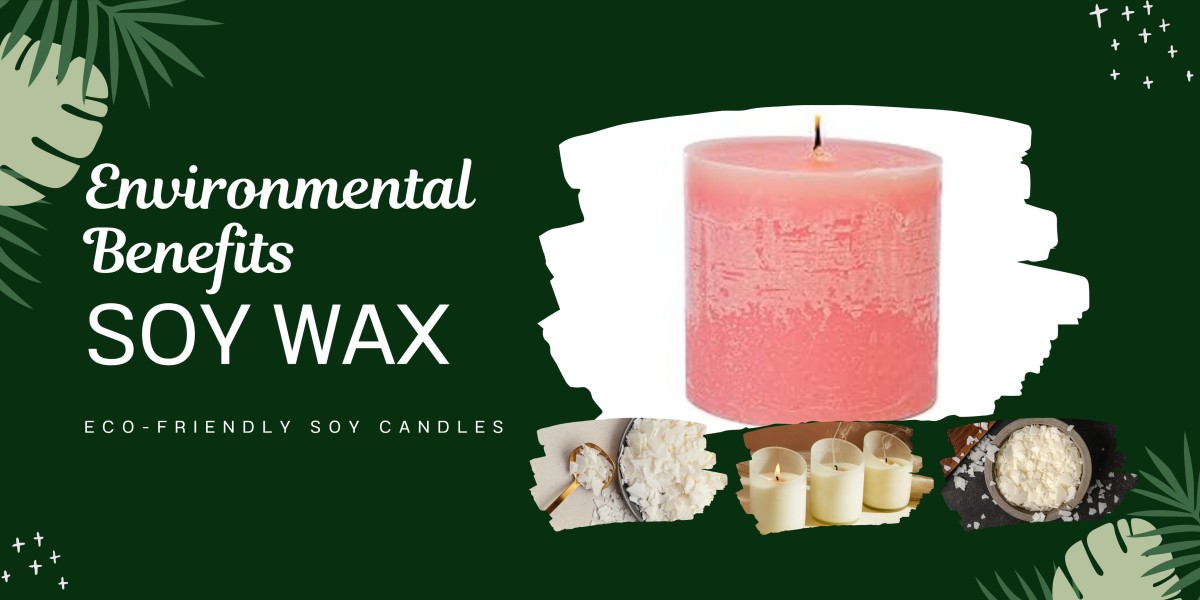In recent years, the demand for natural and eco-friendly products has skyrocketed. From personal care items to home goods, consumers are becoming increasingly aware of the environmental impact of their purchases. Among these trending products, soy wax candles have earned a reputation as a sustainable alternative to paraffin. But are soy wax candles genuinely eco-friendly, or is this perception more about clever marketing? Let’s take a closer look at what makes soy wax unique and whether its environmental benefits live up to the hype.
What Is Soy Wax?
Soy wax is a plant-based wax derived from hydrogenated soybean oil. Unlike paraffin, which comes from petroleum (a non-renewable resource), soy wax is renewable since soybeans are cultivated annually. This basic difference in origin has contributed to soy wax being marketed as a greener option. However, to understand its true sustainability, we need to explore how it’s produced and used.
Environmental Benefits of Soy Wax
One of the main reasons soy wax is considered eco-friendly is its renewable nature. Since soybeans are grown worldwide, the resource itself can be replenished without depleting finite reserves. Another advantage lies in its biodegradability. When disposed of, soy wax breaks down more naturally compared to paraffin, which can linger in landfills and contribute to pollution.

Additionally, soy wax burns cleaner. Paraffin candles release soot and small amounts of potentially harmful compounds when burned, while soy wax produces significantly less soot. This not only benefits indoor air quality but also reduces deposits on walls, ceilings, and furniture. For eco-conscious households, using soy wax candles or even exploring alternatives like an Eco Wax Air Freshener can make a noticeable difference.
Another environmental benefit is efficiency. Soy wax candles often last longer than paraffin candles because of their lower melting point. This means fewer candles are needed over time, which can translate into less overall production, packaging, and waste.
Is Soy Wax Always Sustainable?
While soy wax has undeniable advantages, it is not without its controversies. The cultivation of soybeans, particularly in parts of South America, has been linked to deforestation, habitat destruction, and heavy pesticide use. Large-scale soybean farming often contributes to biodiversity loss and soil degradation. Even though soy wax itself is biodegradable and renewable, its production process is tied to larger agricultural issues that are not always sustainable.
Genetically modified organisms (GMOs) also play a role in the debate. A significant portion of soybeans grown globally are genetically modified, and some consumers are wary of the long-term environmental consequences of such farming practices. While this does not negate the cleaner-burning properties of soy wax, it raises valid concerns about whether soy wax is entirely eco-friendly..
Comparing Soy Wax with Other Alternatives
To assess soy wax’s eco-friendly credentials, it helps to compare it with other candle waxes. Paraffin, as mentioned earlier, is derived from petroleum, making it non-renewable and more polluting when burned. Beeswax, another popular option, is natural and burns cleanly, but it is not vegan-friendly and depends heavily on bee populations, which face their own environmental challenges. Coconut wax is gaining traction as a sustainable choice, as coconuts are widely grown with less environmental strain. However, coconut wax tends to be more expensive and less widely available.
In comparison, soy wax strikes a balance between accessibility, cost, and eco-consciousness. While it may not be flawless, it remains one of the more practical eco-friendly options for everyday use.
How to Choose Truly Eco-Friendly Soy Candles
For consumers who want to ensure their soy candles align with their eco-conscious values, a few key considerations can make a difference. Look for candles that are labeled as 100% soy wax, since some products are blended with paraffin to cut costs. Choosing candles with cotton or wooden wicks can also improve sustainability, as some wick materials may contain trace amounts of heavy metals.
It is also wise to pay attention to packaging. Candles sold in reusable glass containers or recyclable tins are better for the environment compared to those packaged in plastics. Additionally, if you’re searching for gifts, options like Soy Candle Gift Sets can provide eco-conscious choices without compromising on presentation.
The Bigger Picture of Eco-Friendliness
Ultimately, the question of whether soy wax is eco-friendly cannot be answered with a simple yes or no. Soy wax candles do offer significant advantages over paraffin in terms of renewable sourcing, cleaner burning, and longer life. Yet, concerns about soybean farming practices and large-scale agricultural impacts add complexity to the conversation.
For eco-conscious consumers, the best approach is to stay informed, seek transparency from manufacturers, and consider not just the wax itself but the entire lifecycle of the product. This includes how it is grown, processed, packaged, and disposed of. By making thoughtful choices, it’s possible to enjoy the warm glow of a candle without compromising sustainability.
Conclusion
Eco-friendly soy candles represent a step toward more sustainable living, but they are not a perfect solution. Their benefits over paraffin are clear, yet the environmental impact of soybean farming is an important factor to acknowledge. While clever marketing has played a role in boosting soy wax’s popularity, the eco-friendly claims do carry substance—if paired with responsible sourcing and mindful consumer choices.
When it comes to creating a greener home, eco-friendly soy candles can indeed be a part of the solution. But as with many eco-friendly products, awareness and balance are key. By choosing responsibly sourced soy wax candles and complementing them with other sustainable alternatives, we can ensure our choices truly align with our environmental values.



